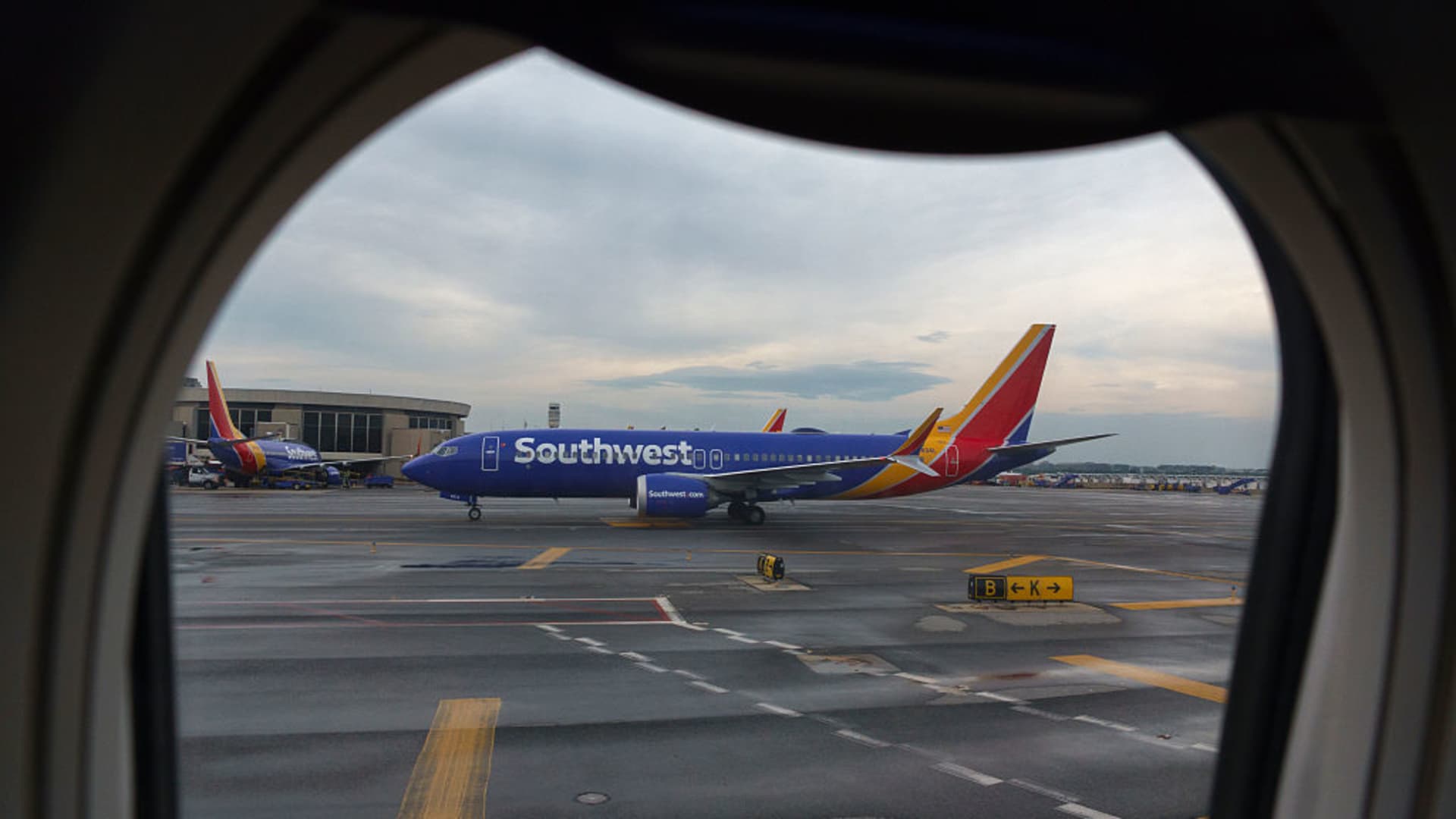Navigating Turbulence: A Deep Dive into Southwest Airlines’ Performance and Future Strategies
A Mixed Flight Path
Southwest Airlines, a pioneer in low-cost air travel, is currently experiencing a period of mixed fortunes. The airline’s recent financial reports reveal a 30% decline in quarterly profits, yet it has also managed to exceed earnings expectations in certain areas. This dichotomy underscores the complex challenges and opportunities facing Southwest as it navigates the post-pandemic aviation landscape.
The Shifting Sands of Demand
The most pressing issue for Southwest is the weakening demand for domestic travel, particularly among leisure travelers who are price-sensitive. This decline in demand has led to a higher number of empty seats and softer fares, directly impacting the airline’s revenue.
Several factors contribute to this shift. The post-pandemic travel boom, driven by pent-up demand, is now normalizing. Consumers, facing persistent inflation and economic uncertainty, are becoming more selective with their spending. This trend is particularly evident in the third quarter, where two budget airlines targeting price-conscious travelers reported losses. Southwest, with its strong focus on the domestic leisure market, is particularly vulnerable to these trends. Unlike larger airlines with diversified customer bases and international routes, Southwest’s reliance on domestic leisure travel exposes it to the full brunt of these economic shifts.
Cost Pressures: A Growing Burden
In addition to demand-related challenges, Southwest is also facing rising costs. Labor expenses and fleet maintenance costs are significant contributors to this financial strain. The airline’s third-quarter profit fell by nearly two-thirds, to $67 million, due to higher labor and other expenses. Despite flying fuller planes, the decline in profit highlights the pressure on profitability.
These increasing expenses, combined with weaker demand, create a challenging environment for Southwest. The airline must carefully manage both revenue and expenses to navigate these turbulent times successfully.
Strategic Adjustments: Course Correction in Progress
In response to these challenges, Southwest is implementing several strategic adjustments to restore profitability and position itself for future success.
Slowing Growth
Recognizing the need to align capacity with demand, Southwest is slowing its growth rate. This move aims to absorb current capacity, mature development markets, and optimize schedules to current travel patterns. This shift from aggressive expansion to a more measured approach focuses on efficiency and profitability.
Capacity Cuts
Southwest plans to cut flights in the second half of 2025. As demand weakened throughout the quarter, it drove softness in bookings, particularly in domestic leisure travel. This strategic adjustment aims to better match supply with demand, ensuring more efficient operations.
Revenue Management and Marketing Evolution
Southwest is focusing on revenue management actions, network optimization, and marketing evolution to drive its quarterly revenue performance. These initiatives aim to maximize revenue from existing operations and attract more customers through targeted marketing strategies.
Network Optimization
Optimizing the airline’s route network is another key strategy. This involves analyzing the performance of different routes, identifying underperforming ones, and reallocating resources to more profitable markets. The company’s quarterly revenue performance was driven by strong demand, revenue management advances, marketing evolution, and network optimization.
Focus on Ancillary Revenue
Southwest has focused on additional ancillary and loyalty program revenue during the summer travel season. This strategy aims to diversify revenue streams and enhance customer loyalty, providing a buffer against fluctuations in ticket sales.
2025 and Beyond: Charting a New Flight Plan
Looking ahead, Southwest faces both opportunities and challenges. The airline’s strong brand reputation, loyal customer base, and efficient operating model remain significant assets. However, the evolving dynamics of the aviation industry and broader economic uncertainties require Southwest to adapt and innovate.
Guidance Withdrawal
Southwest has pulled its 2025 financial guidance, citing economic uncertainty. This decision reflects the difficulty in predicting future performance in the face of volatile market conditions. The airline must navigate these uncertainties carefully to maintain investor confidence and operational stability.
Activist Investor Pressure
Southwest Airlines is under pressure from an activist investor to shake up its management and restore profit margins to pre-pandemic levels. This pressure highlights the need for the airline to demonstrate a clear strategy for turning around its business and addressing financial challenges.
Trade War Uncertainty
Southwest Airlines, like other U.S. carriers, faces uncertainty due to President Donald Trump’s trade war. This geopolitical factor adds another layer of complexity to the airline’s financial forecasting and strategic planning.
Conclusion: A Test of Resilience
Southwest Airlines is at a pivotal moment, testing its resilience and adaptability. The challenges it faces—weakening demand, rising costs, and external pressures—are significant. However, the airline’s proactive response, including strategic adjustments to growth, capacity, and network optimization, demonstrates its commitment to navigating these turbulent times.
The path forward will require careful execution, a continued focus on efficiency, and a deep understanding of the evolving needs and preferences of its customers. Whether Southwest can successfully chart a new flight plan and return to sustained profitability remains to be seen. However, the airline’s history of innovation and its unwavering commitment to its core values suggest that it is well-equipped to weather the storm and emerge stronger.











